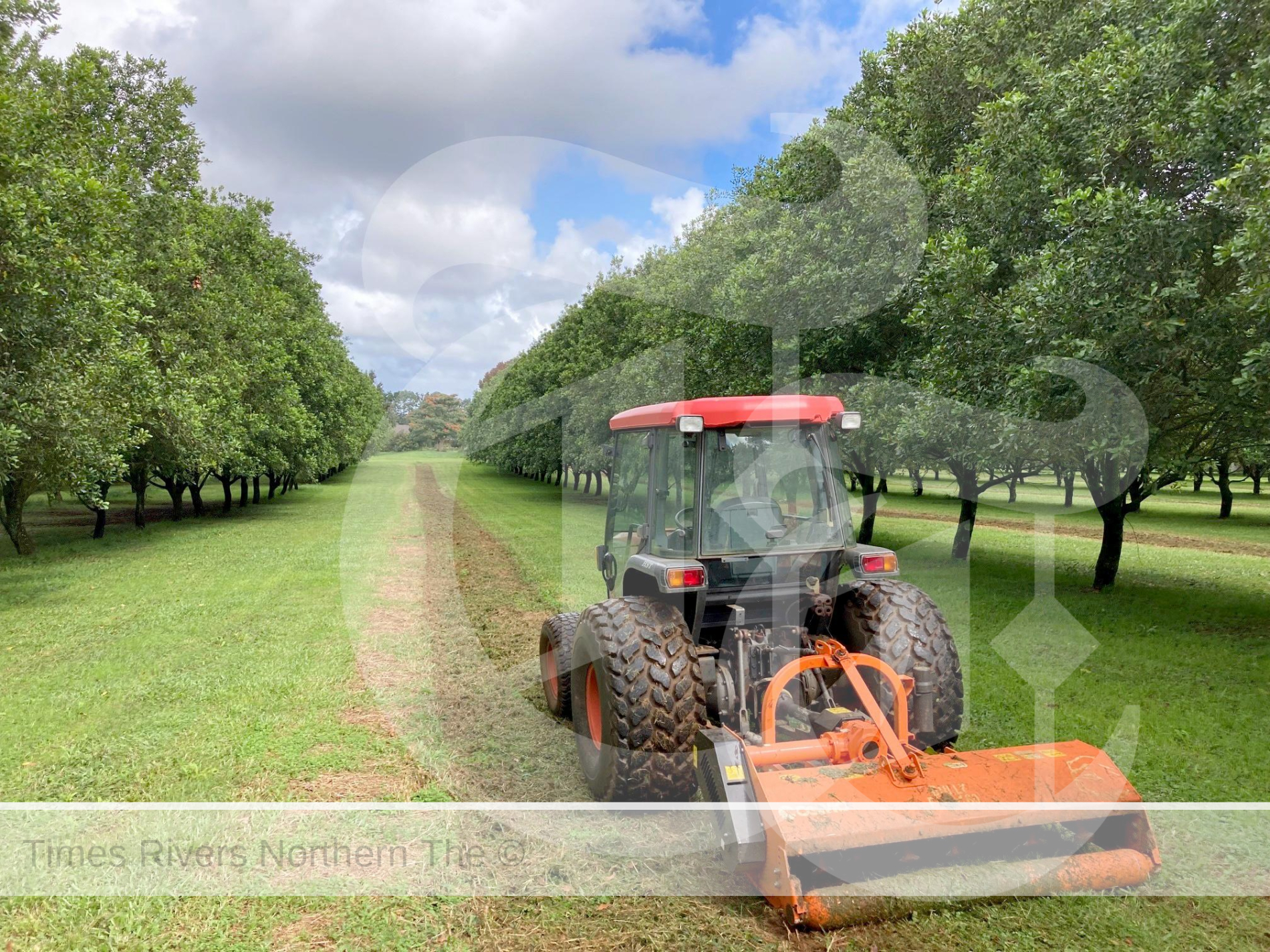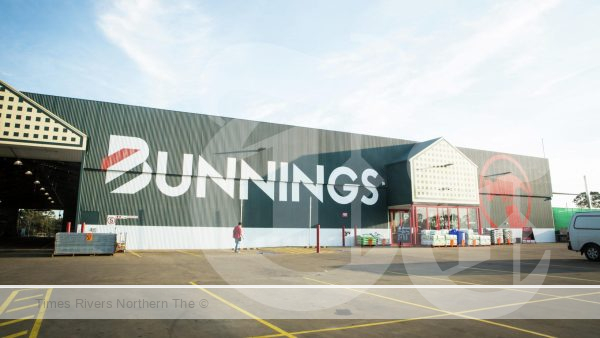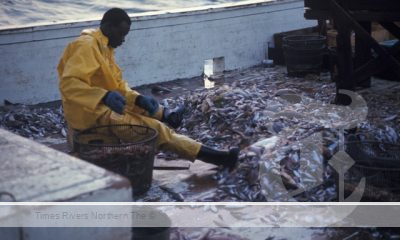Macadamia growers show orchard management key to resilience, sustainability.
Integrated orchard management (IOM) projects designed to get more sunlight into macadamia orchards, promote grass coverage on orchard floors, and manage water drainage are key to improving
the industry’s resilience and environmental sustainability.
“We work closely with our growers to help plan and implement IOM projects that have long-term benefits for macadamia production, profitability and environmental stewardship and sustainability,” said Mark Whitten, Marquis Macadamias Grower Liaison Officer for northern NSW.
“IOM combines three fundamental pillars of orchard management; drainage, orchard floor management and canopy management.
“Growers implement IOM to improve sustainability, control erosion, build healthy soils and canopy management to ensure adequate light levels to sustain grass cover on the orchard floor.
Improving the light environment in the orchards also makes the environment less suitable for pests and diseases.
“This system also ensures orchard resilience in the face of extreme weather events, such as during the floods that hit the Northern Rivers region in New South Wales in February and March in 2022,” he said.
Situated on the Southwestern side of Alstonville in the Northern Rivers region, Marquis Macadamias grower Robert Mosse has spent the previous decade implementing IOM in his orchards.
The program was specifically designed to widen tree spacing within his orchard to improve light penetration, grass coverage, pest management, and more efficiently control the water flowing within
the orchards by installing diversion drains.
“Long before the floods came, we removed approximately 8,000 mature trees.,” Mr Mosse said.
“In the older orchards where the spacing was 7m x 4m, we removed alternate rows, and in some cases, we removed whole blocks, even where the spacing was 8m x 4m, and replanted using much wider spacing.
“Water control was extremely effective in the blocks where tree removal and profiling within rows had been completed. There were no visible signs of erosion within any of these blocks during the recent floods, and the water leaving these blocks was clean.
“We suffered some soil erosion in blocks where the spacing is still 8m x 4m despite the construction of diversion drains.”
He said upon completion of all remedial work, the spacing across his properties will vary between 16m x 4m and 10m x 5m.
“We believe in our situation 10m x 5m is probably the optimum spacing because this will allow for easy conversion to 10m x 10m spacing in the future in the case of some of the really big varieties,” Mr Mosse said.
Mr Mosse said the remedial work undertaken though costly, had been worthwhile.
“Prior to the floods, we started to see yields increase as well as the quality of the nuts. Despite the floods and prolonged wet weather at the beginning of this season, we were able to harvest during most of the wet weather, and our crop this year will exceed last year’s crop.
“However, there is no doubt when the floods hit, we lost nuts already on the ground, especially in those blocks where remedial work has not commenced. Wind damage too was significant in our region, and we suffered a loss due to a few trees being blown down, but most of the damage was caused by heavily laden branches being torn off by the wind.”
Mr Mosse attributes the fact that his orchards suffered less flood damage to the advice given to him by Phil Zadro in Bundaberg many years ago, where they often experience very heavy rain.
“Phil said to me at the time that keeping control of water flowing within the orchards was essential. Phil was absolutely right,” he said.
Mr Whitten said following the floods, it was inspiring to see the resilience of the region and the macadamia growers.
“Growers have been helping each other where possible, with a general acceptance of the situation and an enthusiasm to get back into farming macadamias,” he said.
“Most importantly, Marquis Macadamias has maintained communication with growers, ensuring they have someone to speak with about their situation and to receive tailored advice on harvest strategies and pathways to recovery.
“We have been able to support growers impacted by floods by working with our transport providers to ensure more options are available to get their nuts to the dehusking facilities or factories, as well as extending the opening hours for receivals at our factories,” he said.
For more information on the Marquis Group, visit www.marquis.com
About the Marquis Group
The Marquis Group of companies is the world’s largest growers, processors, and marketer of macadamias, providing superior quality macadamias to food manufacturing, wholesale and retail
customers spanning across five continents.
The Marquis Group is 100% grower owned, processing over 22,000 tonnes per annum through Marquis Macadamias Australia and 18,000 tonnes per annum through Marquis Macadamias Africa.
Both regions are ramping up capacity in the coming years to a combined 96,000 tonnes.
• The production from these facilities is sold through the jointly owned company Marquis Marketing, which markets and sells over 20% of the world’s macadamia kernel.
• Marquis Macadamias Australia production: 22,000 tonnes of nut-in-shell processed, representing 43% of Australia’s macadamia production
• Marquis Macadamias Africa production: 18,000 tonnes of nut-in-shell processed
• 485+ growers
• 700+ employees
• Annual revenue of AU$292 million.
History of the Marquis Group
The Marquis Group began in 1983 when four growers established the Macadamia Processing Company (MPC) in Lismore, New South Wales, Australia, processing 53 tonnes of nut-in-shell.
In 2011 Pacific Gold Macadamias (PGM) was established in Bundaberg, Queensland, Australia, while Macadamia Marketing International (MMI) was formed in Brisbane, Queensland, Australia , to
market and sell the combined production of MPC and PGM.
In 2019, MPC wholly acquired PGM. In February 2020 MPC and PGM rebranded to Marquis Macadamias Australia, while MMI rebranded to Marquis Marketing.
In October 2020, South Africa’s Global Macadamias became a 50% shareholder in Marquis Marketing.
In May 2021, Global Macadamias rebranded to Marquis Macadamias Africa to align with the greater vision of the Marquis Group.





 Tweed Shire News2 years ago
Tweed Shire News2 years ago
 Motoring News1 year ago
Motoring News1 year ago
 COVID-19 Northern Rivers News3 years ago
COVID-19 Northern Rivers News3 years ago
 COVID-19 Northern Rivers News3 years ago
COVID-19 Northern Rivers News3 years ago
 Northern Rivers Local News2 years ago
Northern Rivers Local News2 years ago
 Health News3 years ago
Health News3 years ago
 COVID-19 Northern Rivers News3 years ago
COVID-19 Northern Rivers News3 years ago
 NSW Breaking News3 years ago
NSW Breaking News3 years ago






































